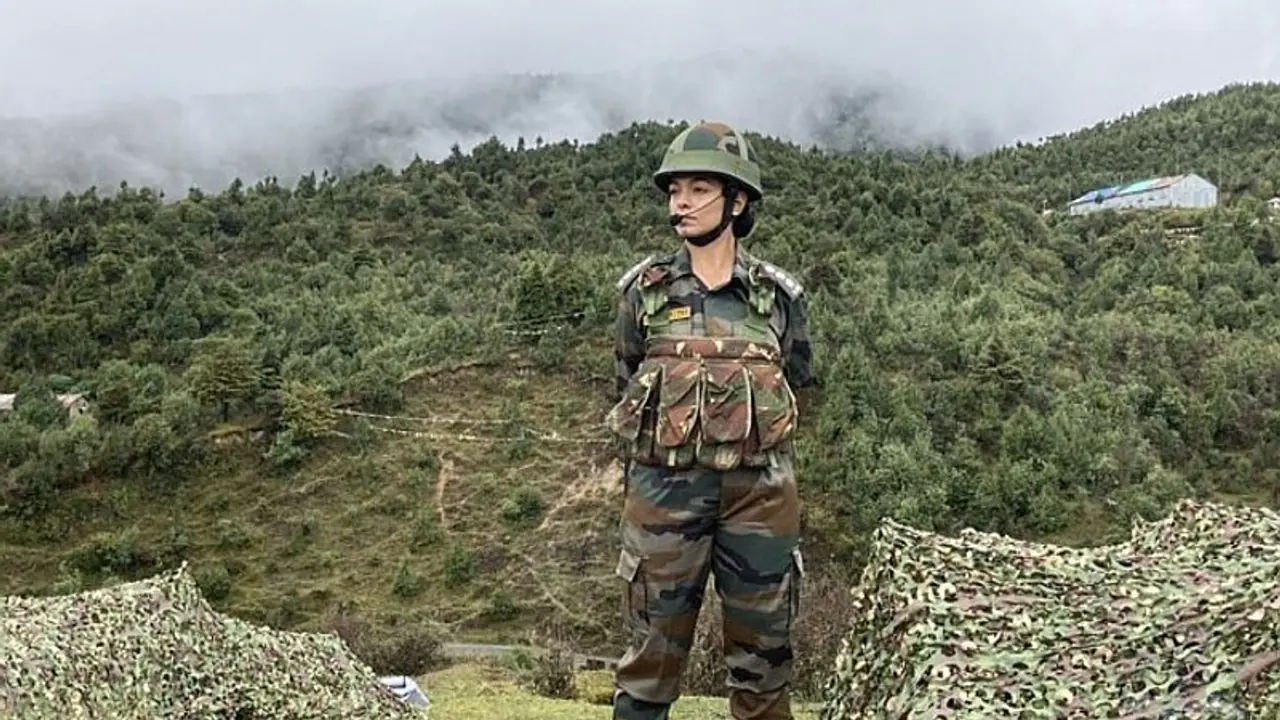Developed under Prime Minister Narendra Modi’s ambitious AatmaNirbhar Bharat initiative, these systems symbolise India’s rapid ascent toward defence self-reliance.
Amid escalating geopolitical tensions and evolving aerial threats, the Indian Army has embarked on a significant modernization drive, inducting advanced indigenous air defense systems—the Medium-Range Surface-to-Air Missile (MRSAM), Quick Reaction Surface-to-Air Missile (QRSAM), and steadily progressing with the Very Short-Range Air Defence System (VSHORADS). Developed under Prime Minister Narendra Modi’s ambitious AatmaNirbhar Bharat initiative, these systems symbolise India’s rapid ascent toward defence self-reliance.

Strengthening India's Frontline Defenses: MRSAM
Central to India's renewed air defence strategy is the Medium-Range Surface-to-Air Missile (MRSAM), a product of collaboration between India’s Defence Research and Development Organisation (DRDO) and Israel Aerospace Industries (IAI). Operational since February 2023 along sensitive sectors such as the China-India border near Sikkim, the MRSAM neutralises threats within a 70-kilometer radius.
Integrating advanced radar technology, active radar-homing missiles with dual-pulse smokeless propulsion, and vertical launch capabilities, the MRSAM system ensures rapid reaction to threats ranging from fighter jets and drones to cruise missiles. Recent successful operational tests in April 2025 demonstrated its precision and reliability, clearly signalling its effectiveness in safeguarding critical military infrastructure. With MRSAM progressively replacing ageing Soviet-era Kvadrat and OSA-AKM systems, India is decisively reducing its historical dependence on imported weaponry.
Mobility and Precision: The QRSAM Advantage
Complementing the MRSAM, the Quick Reaction Surface-to-Air Missile (QRSAM) is tailored specifically for India’s armoured and mechanised units. With a combat range of 25–30 kilometers, QRSAM offers exceptional mobility, which is crucial for scenarios requiring rapid deployment and flexible response.
The QRSAM employs a dual-radar architecture, offering comprehensive 360-degree surveillance and target tracking on the move. It also includes an Indigenous radio frequency seeker and dual-thrust propulsion motor, demonstrating significant strides in India's indigenous missile technology. Despite initial technical challenges during trials in 2022–23, DRDO quickly addressed these issues, reinforcing India’s stringent commitment to Indigenous technology. QRSAM deployment is anticipated along sensitive areas such as the Ladakh frontier, which underlines its strategic importance.
VSHORADS: Promising Potential, Ongoing Development
The Very Short-Range Air Defence System (VSHORADS) completes India's planned layered defence structure. Designed to provide critical point defence against threats like low-flying aircraft, helicopters, and remotely piloted aircraft, VSHORADS promises tactical flexibility and precision.
Officially, as of January 2025, VSHORADS remains under active development at DRDO. Though successful, the internal tests conducted by DRDO in February 2025 were developmental and have not yet involved formal trials by the Indian Army. The system must still satisfy all Preliminary Staff Qualitative Requirements (PSQR) parameters before induction. Equipped with advanced Imaging Infrared (IIR) seekers, a hit-to-kill warhead, and a miniaturized Reaction Control System, the missile is envisioned to surpass legacy systems like Russia’s Igla-S in agility and accuracy upon full maturity. Its lightweight, portable design—weighing 21 kilograms—positions VSHORADS to become an essential tactical asset once developmental hurdles are overcome.
Also read: Crushed Dreams, Broken Promises: China's Betrayal of Hong Kong
Strategic Implications: Toward AatmaNirbhar Bharat
The ongoing induction of MRSAM and QRSAM, alongside the promising development of VSHORADS, represents more than an enhancement of India's defensive capabilities; it signals a broader transformation toward indigenous defense manufacturing. Over 90 percent of the critical components, including radar and missile seekers have been domestically produced, dramatically reducing India’s strategic vulnerabilities tied to imported defense systems. India’s strategic collaboration with Israel, exemplified by the $340 million contract for additional MRSAM systems signed in January 2025, underscores India’s emergence as a confident participant in the global defense industry, reinforcing its commitment to strategic autonomy.
Balancing Capabilities and Limitations
These indigenous systems naturally draw comparisons with their international counterparts. While VSHORADS, upon full maturity, might have a slightly shorter operational range than the US-made Stinger missile, it is designed to offset this limitation with superior portability and agility. While MRSAM’s 70-kilometre operational radius is modest compared to the Russian S-400’s 400-kilometre range, it provides a highly mobile, cost-effective solution optimised for rapid-response scenarios, reflecting India’s nuanced defence posture.
Future Integration and Capability Enhancement
Looking forward, India plans to integrate these systems further within its broader strategic defense architecture. The potential integration of MRSAM into India's emerging ballistic missile defence network and ongoing enhancements of the QRSAM with advanced electro-optical targeting systems underline India's continuous pursuit of innovation and technological excellence.
The ongoing induction of MRSAM and QRSAM, coupled with the developmental progress of VSHORADS, underscores a strategic shift: India is steadily transitioning from a major importer to a prominent innovator in defence technology. These developments position India to effectively counter evolving regional threats while reinforcing its strategic autonomy and vision of a genuinely self-reliant nation.
(Ashu Maan is an Associate Fellow at the Centre for Land Warfare Studies. He is currently pursuing his PhD from Amity University, Noida, in Defence and Strategic Studies).
